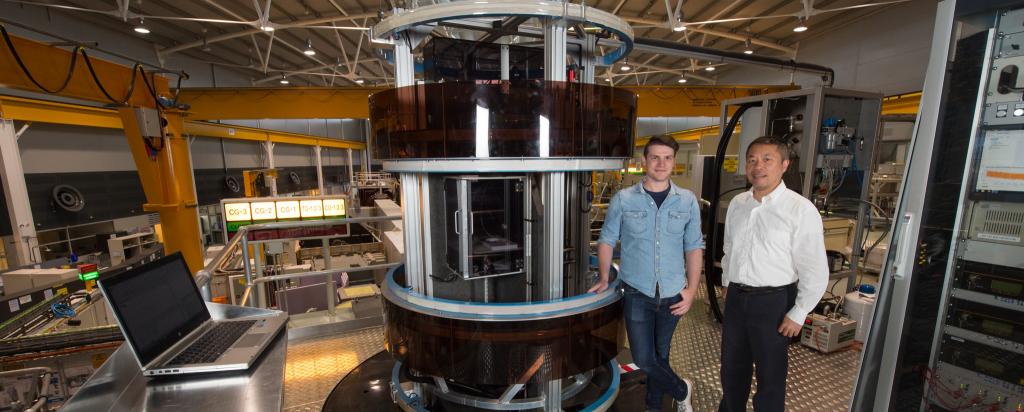
Helium 3 Polariser
During 2012, we took delivery of a new state-of-the-art metastable-exchange optical-pumping helium-3 polarising system. The 3He station was developed and constructed for us by the Institut Laue Langevin, in Grenoble, France.
It enable polarisation-analysis experiments on five of our existing instruments (Wombat, Quokka, Taipan, Pelican and Sika), and will extend the present polarisation-analysis capability on Platypus (which uses supermirrors) to off-specular diffuse scattering.
Our contract with the Institut Laue Langevin includes the magnetic-field environments and in-situ glass cells for all of these instruments.
The filling station itself consists of a set of glass cells containing low-pressure discharge-excited 3He gas, a laser system that pumps the the helium atoms into a spin-polarised state, all contained in a uniform magnetic field generated and maintained by a large set of Helmholtz coils.
The whole assembly is located on top of the cold-guide bunker in the Neutron Guide Hall. The first in-beam tests using helium-3 gas polarised at ANSTO took place on Taipan in January 2013, and after a hiatus due to a major failure in the glass gas-handling system, 70% 3He polarisation was achieved in a neutron beam on our WOMBAT high-intensity powder diffractometer, on 17 April 2014.
The basic physical idea is that while the 3He is a good neutron absorber, and it is routinely used in neutron detectors, the absorption cross-section is extremely spin dependent: the absorption occurs almost exclusively when the neutron spin is antiparallel to that of the helium-3 nucleus, while there is very little interaction if the neutron and 3He spins are parallel. Therefore, if one can polarise a volume of helium-3 gas, it will be transparent to one neutron spin polarisation, and black to the the other polarisation.
The device acts as a spin-dependent neutron filter (or valve), over a relatively wide range of neutron energies and independent of the neutron trajectory through the gas. The competing technologies of (a) supermirrors (as already implemented on Platypus and the incident beams of Quokka and Pelican), and (b) polarising Bragg crystal reflection (for instance from Cu2MnAl Heusler alloys) have the constraints of working best for cold neutrons and for beams of limited divergence in the case of supermirrors, and that crystal polarisers also monochromate the beam, whether or not one wants to.
The main disadvantage of polarised 3He, aside from its complication, is that it is very sensitive to magnetic fields, and cannot be used in close vicinity to high-field magnets.